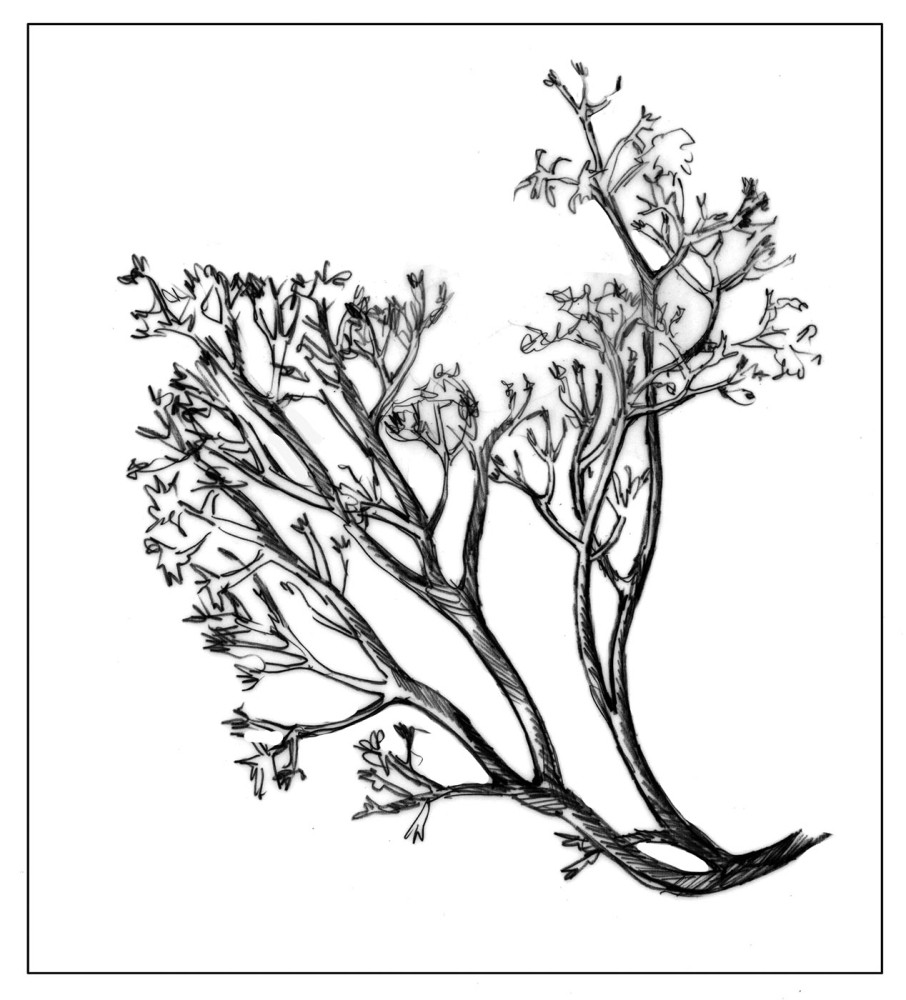
Santa’s reindeer need fuel to pull that sleigh full of toys, and one of their primary winter foods is reindeer lichen, also known as reindeer moss. These are puffy, many-branched, pale green or grayish-white lichens up to 4½ inches tall, spongy to the touch when damp. Multiple species of reindeer lichen cover extensive areas of ground in the Arctic tundra and Canadian boreal forest and also grow on mountain summits and at other sites throughout the Northeast.
Like other lichens, reindeer lichens are composed of a fungus and an alga living together in a symbiotic, or mutually beneficial relationship. The fungus provides a protective substrate and absorbs water and minerals from the air, while the alga produces food energy through photosynthesis. Reindeer lichens contain spore-producing fungal bodies in their branch tips, but their predominant means of reproduction is vegetative. Fragments from the lichen’s body break off and are dispersed by wind, water, or animals to other locations, where they grow into new lichens.
Unlike some lichens, reindeer lichens cannot colonize bare rock. They need at least a thin layer of soil, humus, raised peat, or woody material to grow. These lichens prefer dry or well-drained, sunny sites and are intolerant of deep shade. Reindeer lichens grow very slowly, only 0.2 to 0.4 inch per year, but tend to live a long time – more than 100 years on average. Because of their slow growth rate, if damaged or destroyed, they may take decades to recover.
In the Northeast, reindeer lichens are abundant in alpine areas such as New Hampshire’s Presidential Range, where they grow amidst dwarf shrubs, sedges, rushes, and heath plants such as black crowberry. They are well-adapted to the alpine environment, as they can absorb water vapor from the clouds and mist that often persist in the high peaks, and they can photosynthesize at very low temperatures. These lichens also grow on open rock outcrops in cool inland forests and along the Maine coast, including at Acadia National Park, where they benefit from frequent fog.
Reindeer lichens and other lichens and mosses growing close together form mats that sequester carbon, help regulate water tables, maintain cool soils, and prevent soil erosion. In places such as the boreal forest, where lichens dominate the ground surface, they are important in carbon and nutrient storage. Lichen mats inhibit surrounding competitive plants from growing into their habitat by secreting acids and other chemicals. They are sensitive to air pollution and are therefore good indicators of air quality.
Getting back to Santa’s reindeer, these lichens provide critical winter forage for European reindeer, including the semi-domesticated herds of Scandinavia’s Sami people, and for most North American caribou herds. (Reindeer and caribou are the same species, but different subspecies.) These animals’ stomachs contain microorganisms that help them digest lichens. Unfortunately for caribou, researchers have documented declines in the lichen ground cover of Arctic ecosystems in recent decades, attributed to climate warming, wildfires, logging, and heavy grazing.
The benefits to wildlife of these lichens extends beyond reindeer. Moose, musk oxen, mountain goats, and Dall sheep also graze on reindeer lichens, which are high in carbohydrates. Insects and small mammals such as voles consume these lichens, and birds and mammals use them in nest-building.
Humans have used reindeer lichen for a variety of purposes over the centuries, ranging from use in food, liquor, and medicine to dye and wreath decoration. For example, Alaska’s inland Dena’ina Athabaskan people crush and boil or soak the lichen until soft and eat it plain or mixed with berries, fish eggs, or lard. Reindeer lichen has been used to make brandy in Sweden. Broth from this lichen has been used to treat sickness and eye infections by the Inuit at Nunavet, Canada.
Look for these distinctive lichens on rock outcrops in woodland clearings on your winter walks.


Discussion *